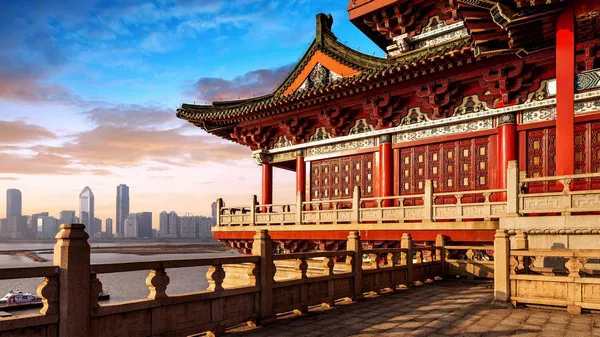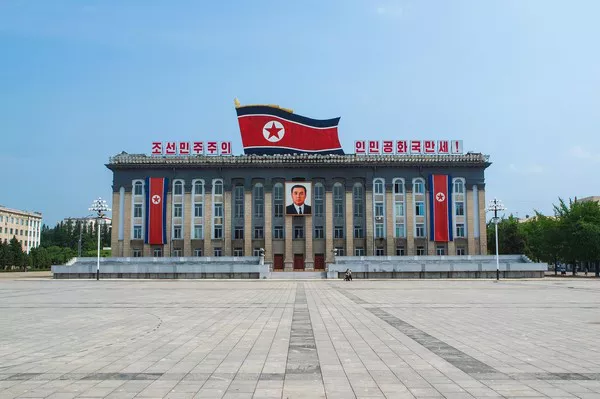Asia, the largest and most populous continent on Earth, is home to a myriad of cultures, economies, and geopolitical dynamics. Within its vast expanse, certain nations wield significant influence, shaping regional affairs and global politics. Understanding the power dynamics within Asia is essential for comprehending global geopolitics and economic trends. In this article, we delve into an in-depth analysis to identify and examine the ten most powerful countries in Asia.
10 Most Powerful Countries in Asia
1. China
China, the world’s most populous country and the second-largest economy, stands as a juggernaut in Asian affairs. With its rapid economic growth, technological advancements, and assertive foreign policy, China has emerged as a global superpower. The country’s vast manufacturing base, substantial foreign reserves, and ambitious infrastructure projects such as the Belt and Road Initiative (BRI) underline its economic prowess. Additionally, China’s military modernization and territorial assertiveness in the South China Sea and other disputed regions bolster its geopolitical influence.
2. Japan
Renowned for its technological innovation, disciplined work culture, and economic resilience, Japan holds a prominent position in Asia. Despite facing demographic challenges and a prolonged period of economic stagnation, Japan remains the third-largest economy globally. The country’s strong industrial base, leading-edge research and development, and strategic alliances contribute to its influence. Moreover, Japan’s role as a key U.S. ally in the Asia-Pacific region further enhances its geopolitical significance.
3. India
India, with its vast landmass, burgeoning population, and growing economy, is a rising power in Asia. As the world’s largest democracy and a nuclear-armed state, India commands attention in regional and global affairs. The country’s expanding middle class, vibrant IT sector, and ambitious space program exemplify its economic and technological potential. Furthermore, India’s strategic location and partnerships, particularly with countries like the United States and Japan, bolster its influence in shaping Asia’s future.
4. Russia
Although geographically spanning Europe and Asia, Russia’s significant presence in Asia-Pacific affairs cannot be overlooked. As a major energy exporter, nuclear power, and permanent member of the UN Security Council, Russia exerts considerable influence in shaping regional dynamics. The country’s military capabilities, particularly in the Far East, and strategic partnerships with nations like China and India enhance its geopolitical clout. Moreover, Russia’s involvement in regional conflicts and diplomatic maneuvers underscore its role as a key player in Asian geopolitics.
5. South Korea
South Korea, a dynamic and innovative economy, stands as a key player in Asia’s geopolitical landscape. With its leading technology firms, robust export-oriented industries, and cultural influence through K-pop and entertainment, South Korea punches above its weight economically. Moreover, the country’s strategic location in Northeast Asia and close alliance with the United States position it as a crucial actor in regional security dynamics, particularly amid tensions with North Korea.
6. Saudi Arabia
As the largest economy in the Middle East and a major oil producer, Saudi Arabia wields significant influence in both regional and global affairs. Despite challenges posed by fluctuating oil prices and efforts towards economic diversification, the Kingdom’s vast oil reserves and strategic partnerships bolster its geopolitical standing. Saudi Arabia’s role as the custodian of Islam’s holiest sites and its involvement in regional conflicts further underscore its influence in shaping the Middle East and beyond.
7. Turkey
With its unique geographical position bridging Europe and Asia, Turkey holds strategic importance in both regions. As a member of NATO and a candidate for EU membership, Turkey’s foreign policy decisions reverberate across the globe. The country’s growing economy, military capabilities, and cultural heritage contribute to its influence in the Middle East and beyond. However, Turkey’s assertive foreign policy, particularly in conflicts such as Syria and Libya, has also garnered international attention and scrutiny.
8. Iran
Iran, with its rich history, sizable population, and significant energy resources, is a key player in the geopolitics of the Middle East and beyond. Despite facing international sanctions and geopolitical tensions, Iran remains a regional power with influence extending across the Persian Gulf and into Central Asia. The country’s strategic position, military capabilities, and involvement in regional conflicts such as Syria and Yemen underscore its importance in shaping the geopolitical landscape of Asia.
9. Indonesia
As the largest archipelago in the world and the largest economy in Southeast Asia, Indonesia holds strategic importance in the Asia-Pacific region. With its vast natural resources, growing middle class, and youthful population, Indonesia’s economic potential is substantial. Moreover, the country’s geographic position along key maritime trade routes and its role in regional organizations such as ASEAN enhance its geopolitical significance. Indonesia’s efforts towards maritime security and diplomatic engagement further solidify its influence in shaping regional dynamics.
10. Vietnam
Vietnam, with its resilient economy, strategic location, and growing regional influence, rounds out the list of the ten most powerful countries in Asia. Despite its tumultuous history, Vietnam has emerged as one of the fastest-growing economies in Southeast Asia. The country’s strategic partnerships, particularly with countries like Russia and India, contribute to its geopolitical significance. Moreover, Vietnam’s assertive stance in maritime disputes in the South China Sea underscores its willingness to defend its sovereignty and interests.
See Also: 10 Richest Countries In The World
Conclusion:
In conclusion, the ten most powerful countries in Asia represent a diverse array of economies, cultures, and geopolitical interests. From economic giants like China and Japan to regional powers like India and Saudi Arabia, each nation plays a crucial role in shaping the continent’s future. Understanding the dynamics of power within Asia is essential for navigating global geopolitics and anticipating emerging trends. As the world continues to evolve, the influence of these ten countries will remain central to the trajectory of Asia and the broader international landscape.
You Might Be Interested In:



























